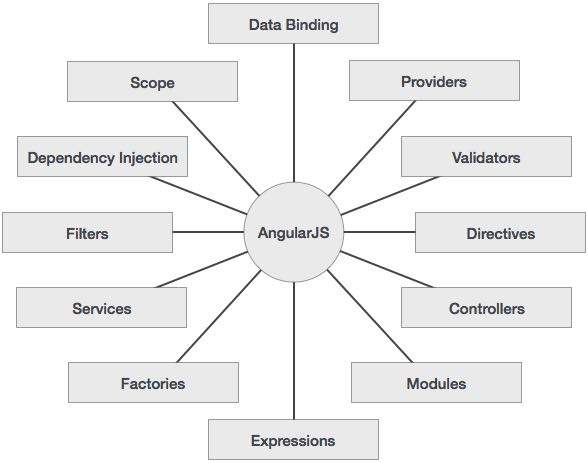INTRODUCTION TO ANGULAR JS
Angular JS is a client side javascript framework for adding interactivity to your HTML.
It can be added to an html page with a <script> tag and show when to call a particular piece of javascript code.
Prerequisite for ANGULAR JS
1.Moderate knowledge of HTML,CSS and JavaScript
2.Basic Model-View-Concept(MVC)concepts
3.The Document Object Model(DOM)
4.JavaScript Functions
Now,Why would you learn and use Angular JS?
You can use AngularJS to create single page applications.
You can use it to create dynamic
responsive websites.
You can use it to organise javascript code.
AngularJS's data binding
and dependency injection eliminates much of the code you would otherwise have to write.
Points to be remember:
AngularJS extends HTML attributes with Directives, and binds data to HTML with Expressions.
AngularJS is a JavaScript framework written in JavaScript.
AngularJS is distributed as a JavaScript file, and can be added to a web page with a script tag:
<script src="https://ajax.googleapis.com/ajax/libs/angularjs/1.6.9/angular.min.js"></script>
AngularJS Extends HTML
AngularJS extends HTML with ng-directives.
The ng-app directive defines an AngularJS application.
The ng-model directive binds the value of HTML controls (input, select, text area) to application data.
The ng-bind directive binds application data to the HTML view.

Angular JS Example:
<!DOCTYPE html>
<html>
<script
src="https://ajax.googleapis.com/ajax/libs/angularjs/1.6.9/angular.min.js"></script>
<body>
<div ng-app="">
<p>Name: <input type="text" ng-model="name"></p>
<p ng-bind="name"></p>
</div>
</body>
</html>
Here you will learn everything about
directives, expressions, filters, modules,controllers,Events, DOM, Forms, Input, Validation, Http, and more.
# What is Dependency Injection in Angular?
It is a coding pattern in which a class receives its dependency from an external source rather than creating them itself.
# What is Two-way data binding?
Two-way data binding means any data-related changes affecting the model are immediately propagated to the matching view and that any changes made in the view are immediately reflected in the underlying model.
